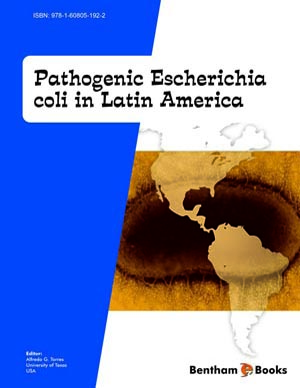Abstract
In Argentina, a total of 1,117,718 diarrheal diseases cases were notified in 2008 with an incidence rate of 28.12/100,000 inhabitants, being Diarrheagenic Escherichia coli (DEC) strains the most important etiological agents associated to them. Several community-based studies have assessed the relative frequency of DEC pathotypes, accounting for 6 to 28.8% (EPEC), 9.7 to 24.4% (ETEC), 0.3 to 17.1% (EIEC), 1.2 to 17.1% (STEC), 20 to 31.4% (EAEC), and 27.1 to 29% (DAEC). In the last 10 years, approximately 500 HUS cases were reported annually, with an incidence that ranged between 7.8 and 17/100,000 children less than 5 years of age. STEC O157:H7 was the major serotype isolated (60%), with prevalent genotype stx2/stx2c(vh-a)/eae/ehxA (81.4%), mainly of the phage type 4 (40%). Two XbaI-PFGE patterns are prevalent, AREXHX01.0011 and AREXHX01.0022, representing respectively 9.9% and 5.6% of the E. coli O157 Argentinean isolates in the database. Among the non-O157 STEC strains, genetic profiles were more diverse, but stx2/eae/ehxA (66.2%) was prevalent. STEC strains, mainly Stx2-producers, have been recovered from animals and food, being cattle an important reservoir, with increased risk of illness linked to beef-related dietary habits, and animal exposure. The implementation of integral preventive measures is necessary to decrease the incidence of diarrheal disease in Argentina and the associated human and economic costs.


